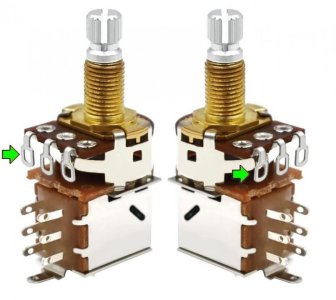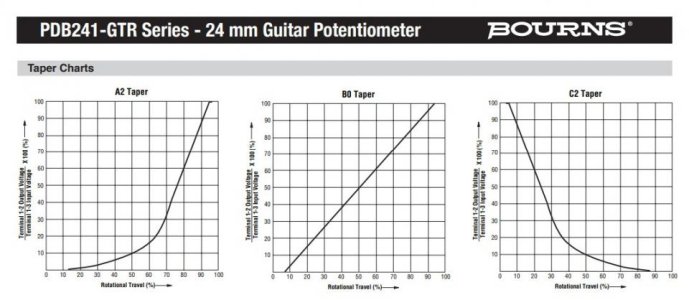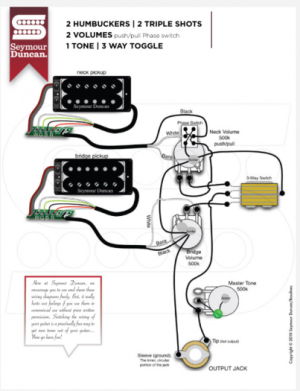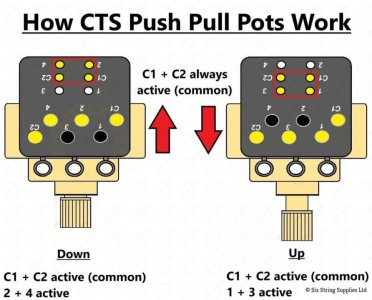Inflames626
New member
So some metric pots I bought on Amazon are here: https://www.amazon.com/dp/B09C8G8NH2?psc=1&ref=ppx_yo2ov_dt_b_product_details
They behave a bit strangely in that I think the ground lug is on the left side when looking down on it as you would in a diagram or in a guitar, not on the right.
I think this because whenever I hook it up the volume pot works backwards.
I am wiring these to a DPDT push pull phase switch on the neck humbucker.
I have one more of these (they come in pairs), so when I wire the next one up, I will wire it with the ground lug on the left and the switch lug on the right (I am going to the center lug with the hot wire so I can have an independent volume control that grounds out when turned down).
My question is, if I reverse the wires on the pickup lugs, do I also have to reverse the pickup wires on the DPDT switch?
For example, on a regular DPDT the white Triple Shot wire goes on the left side and the black goes on the right when you are looking at the diagram.
If I reverse the lugs on these weird pots, do I also reverse the white and black wiring on the DPDT switches?
My guess is no since the DPDT lugs are the same on either side, but I wanted to make sure.
I am aware, of course, that I will need to reverse the X shaped wires coming off the DPDT that reverse the phase to the opposite pot lugs.
Thanks.
They behave a bit strangely in that I think the ground lug is on the left side when looking down on it as you would in a diagram or in a guitar, not on the right.
I think this because whenever I hook it up the volume pot works backwards.
I am wiring these to a DPDT push pull phase switch on the neck humbucker.
I have one more of these (they come in pairs), so when I wire the next one up, I will wire it with the ground lug on the left and the switch lug on the right (I am going to the center lug with the hot wire so I can have an independent volume control that grounds out when turned down).
My question is, if I reverse the wires on the pickup lugs, do I also have to reverse the pickup wires on the DPDT switch?
For example, on a regular DPDT the white Triple Shot wire goes on the left side and the black goes on the right when you are looking at the diagram.
If I reverse the lugs on these weird pots, do I also reverse the white and black wiring on the DPDT switches?
My guess is no since the DPDT lugs are the same on either side, but I wanted to make sure.
I am aware, of course, that I will need to reverse the X shaped wires coming off the DPDT that reverse the phase to the opposite pot lugs.
Thanks.




